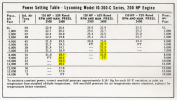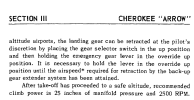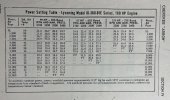On a NA piston, once you reach a certain altitude you do not achieve full power. So the throttle essentially whether it is 100% open or 70% (the %’s are a guesstimate) open produces the same manifold pressure. So does it matter if the throttle is 70% or 100% open at altitude when they achieve the same manifold pressure? I’m wondering if more fuel is being used (even though the fuel flow reads the same once full power is achieved whether the throttle is open 70 or 100%). The drawback I see is when you descend for whatever reason if you are leaned that you need to richen the mixture otherwise the engine may start to act rough or lose performance.
Also I notice that foreflight calculations assume maximum available power at all altitudes? Anyway to adjust this?
Also I notice that foreflight calculations assume maximum available power at all altitudes? Anyway to adjust this?




